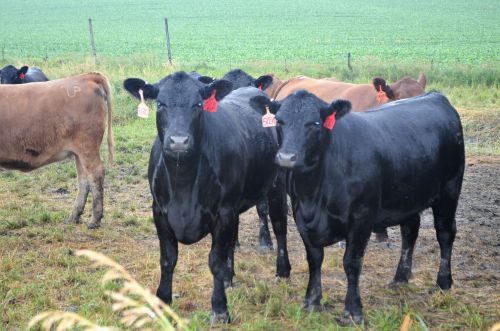Prevention, Diagnosis, and Treatment of Foot Problems in Beef Cattle
Posted: March 20, 2017 | Written By: Tom Staniszewski, Form-A-Feed Livestock and Production Specialist

Cattle lameness affects all segments of the beef industry, including cow-calf operations, stockers, and feedlots. Beef producers want healthy cattle to maximize performance, so industry demand brings lameness to the forefront for producers managing feedlot economics and their overall bottom line. If we are to treat the cattle properly we need to figure out what type of lameness we’re dealing with.
Research shows that 90% of lameness is caused by problems in the foot. Two of the most common problems are foot rot and toe abscess, which can require two different treatments. Foot rot is an infection of the skin between the toes, often showing a lot of swelling and usually has a foul smell. Most foot rot responds well to antibiotics approved for it. Sometimes it’s necessary to scrub out the hoof and use a topical antiseptic. The key to treating is doing it early.
Five tips for prevention, diagnosis and treatment of foot rot:
- Cause: Foot rot is caused by the thinning and softening of the interdigital skin by puncture wounds or continuous exposure to wet conditions, which provide an entry point for bacteria and infection.
- Transmission: Once loss of skin integrity occurs, bacteria gain entrance into subcutaneous tissue and begin rapid multiplication and production of toxins that stimulate further bacteria multiplication and infection into the foot.
- Diagnosis: Look for signs of foot rot, including lameness, elevated body temps, swelling of the foot, and separation of the skin. Ulcers ,abcesses, abrasions, fractures, and inflammation also indicate foot rot.
- Treatment: If caught early, treatment is usually successful. Most cases require the use of antimicrobial therapy such as LA 200, procaine penicillin, tylan 200 and sustained release sulfamethazine boluses. These are over the counter treatments. Naxcel, Micotil, and Albon S.R. are vet prescriptions that are shown to be effective. Whichever treatment is used, it is best to keep cattle in a dry area until healed.
- Prevention: Zinc supplementation and pen management are the keys to maintaining skin and hoof integrity. Pen management is a big key to foot health. Keeping the pens scraped and dry, along with keeping them smooth and bedded is important. Hydrated lime around the waterers helps keep the area dry.
Digital Dermatitis is often referred to as hairy heel warts and is becoming a common infectious foot disease in beef cattle, whereas not too long ago it was mostly in dairy breeds. It can cause painful lesions that often lead to lameness, which can account for up to 70% of sales of non-performing cattle. Quite often digital dermatitis doesn’t respond to some of the treatments, therefore prevention is the key. Zinpro® has a product that was developed specifically for use in dairy and beef cattle and is designed to promote foot health from the inside out.
It’s important to keep foot health a priority on your cattle operation to prevent cattle lameness. If you would like more information on common foot problems in beef cattle, and how proper care and management can prevent these problems, contact your Form-A-Feed representative.